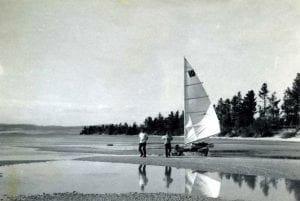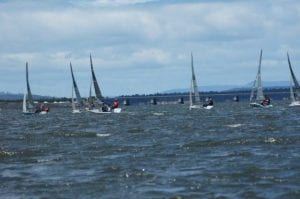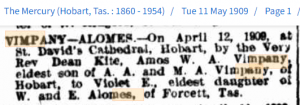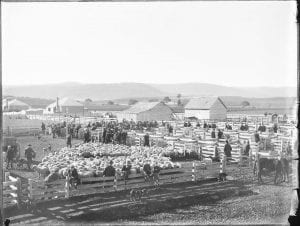Melinda Reed adapted this entry from a Mac Story article in Pitt Water Chronicles Vol 1.
Boats were an important aspect of life around Pittwater from the 1800’s. The alternatives were an extra 20 miles around the north of the water body by land or 40 miles by sea.
Sailing and rowing regattas on Pittwater were frequent in the early days of settlement and planked Snipe Class yachts continued to race in the Lewisham area, up until the late 1950’s. Speed boat racing was also common in the Lewisham area, at least into the early 70’s. While power boat activity continued near Lewisham, the power boat and water skiing activity at Midway Point had ceased, so a road access and all-weather launching ramp was built in the 1968/69 sailing season.
Sailing craft at Midway Point in the late 1960’s included several Mirror dinghies, a Sabot, a TS 16, a clinker planked dinghy, a Moth class, a Lightweight Sharpie, a trimaran, a Cadet Dinghy and even a sand yacht on Five Mile Beach. There were also a couple of cruising yachts and
inboard motor boats.

Mac Story organised a sailing race around the two islands to the South of the causeway – this saved laying marker buoys and made for a light hearted adventure for newcomers to sailing races. After the Island Race, Story convened informal meetings and ran three more races above the causeway. Enthusiastic family members were starters and time-keepers and Mr Cyril Bond provided his motor boat and seamanship as a safety service. The Club’s home base at the end of Brady Street was established on land owned by Mr WJ Reynolds.
During the winter of 1968, informal meetings and fundraising activities ramped up. Brian and Jacqui Dawson donated a new dinghy as a raffle prize for a boat show at the local hall. At a time when many wage earners were only paid $40 per week, $156 was raised from various sources. Mrs Pat Webberly, Mrs Pat Whitehead, Mrs Marchant, Mrs Ros’ Buckland and Mrs Freda Ziegler went on to become expert fundraisers for the Club, with money raised from raffles and Christmas tree sales going toward Club facilities and ongoing roadworks.
The Public Meeting to officially launch the Club was held on Tuesday 6th June 1968 and was attended by 21 people who elected the inaugural committee: Mr M Story, Mr J Whitehead, Mr T Miller, Mr B Marchant, Mr T Buckland, and Mr J Miller. A constitution was developed, Midway Point Yacht Club was granted membership of the Tasmanian Yachting Association and consequently the Australian Yachting Association, with membership enabling local sailors to compete in events at other clubs and at regattas, plus sailing championships anywhere in Australia.

From the 1968 beginnings, the Midway Point Yacht Club became known as a friendly club where women of any age were encouraged to crew or skipper a sailing boat. Debbie Green was a very early crew along with Pam Webberly and Pat Whitehead. During the 1969/70 Tasmanian Mirror Dinghy Championships, MPYCs first all-female crew of Pat Whitehead and Elsa Story scored a creditable 5 th placing in a field of 20 male crews. Over the following years many female sailors have amplified the early example.
Membership rose to over 100 enthusiastic members in the first two years. Along with many clubs the MPYC membership dropped after a few years and then rose again. Today it is a strong and active club with a solid membership base and training programs. The club house and the modern jetty, along with launching and rigging areas are now suitable for all manner of sailing events, including state championships. MPYC was awarded the Tasmanian Yacht Club of the Year in 2017. In 2020 MPYC became a direct member of Australia Sailing.


